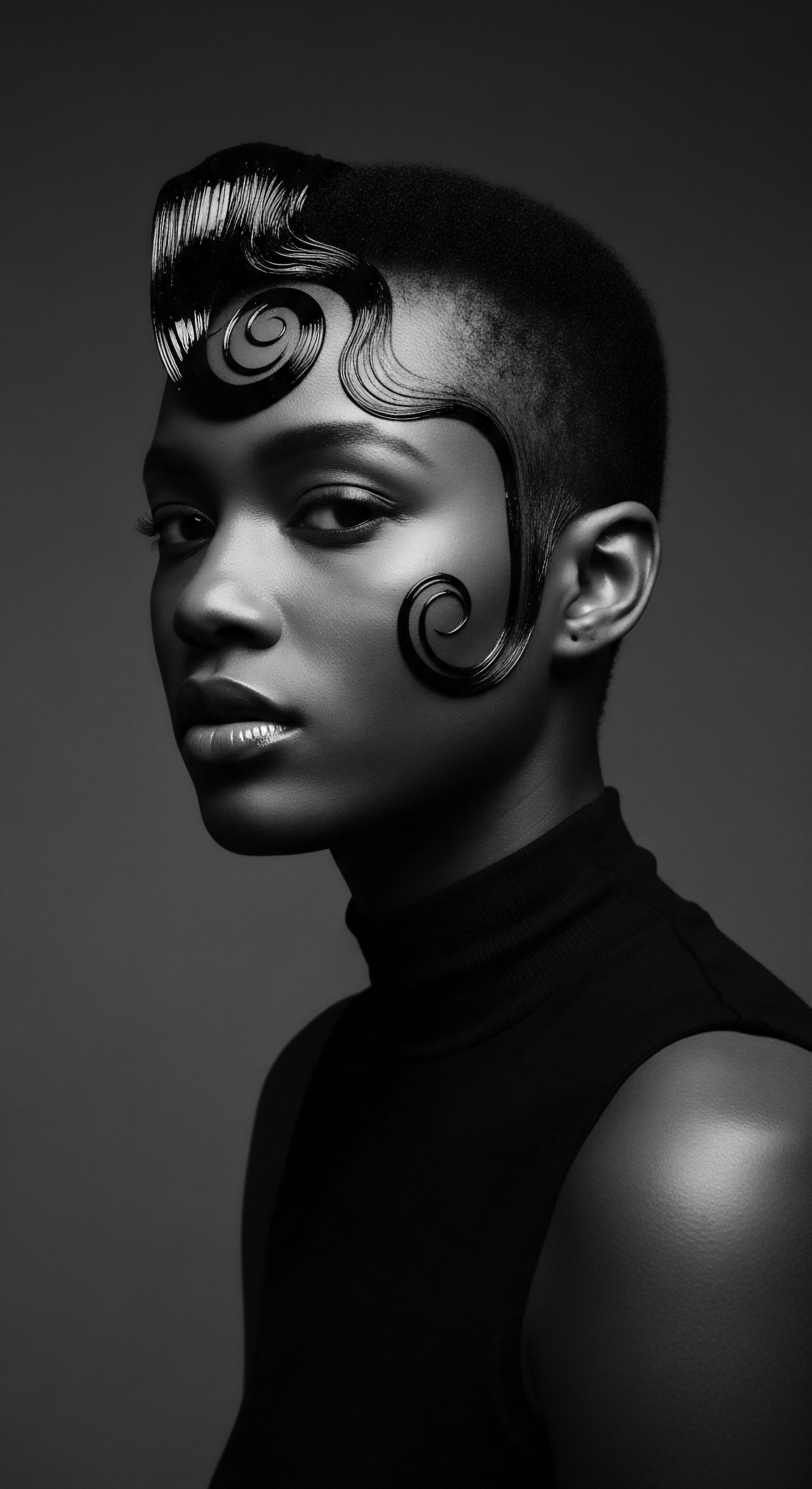
Roots
The silence of night, a time for rest and renewal, holds a particular significance for textured hair. For generations, across continents and through the veil of history, those with coils, curls, and waves have understood, often intuitively, the deep connection between nighttime protection and the vitality of their strands. This understanding springs from the very structure of textured hair itself, a marvel of natural engineering that, while beautiful, possesses unique vulnerabilities that necessitate careful consideration, particularly during slumber.
When we consider why smooth sleep surfaces offer profound benefits to textured hair, we begin at the source ❉ the hair shaft. Unlike straight hair, which typically has a uniform, round cross-section and a relatively flat cuticle layer, textured hair – ranging from loose waves to tight coils – often exhibits an elliptical or flat cross-section. This shape, combined with the natural bends and twists along each strand, means that the outer protective layer, the Cuticle, is inherently more exposed.
These lifted or loosely laid cuticles, while contributing to the hair’s distinctive visual character, also render it more susceptible to friction. Each movement against a rough surface, such as a traditional cotton pillowcase, can catch and snag these delicate scales, leading to abrasion, breakage, and the loss of precious internal moisture.
This elemental truth of hair biology found its parallel in the ancestral wisdom of hair care. Long before scientific microscopes unveiled the cuticle’s precise architecture, communities with deep hair heritage understood the necessity of gentle touch and protective coverings. The daily wear and tear on hair, from environmental elements to communal activities, made the nightly ritual of preservation an act of profound self-care and cultural continuity.
The fundamental structure of textured hair calls for careful nighttime protection, a wisdom understood by ancestors long before modern science.
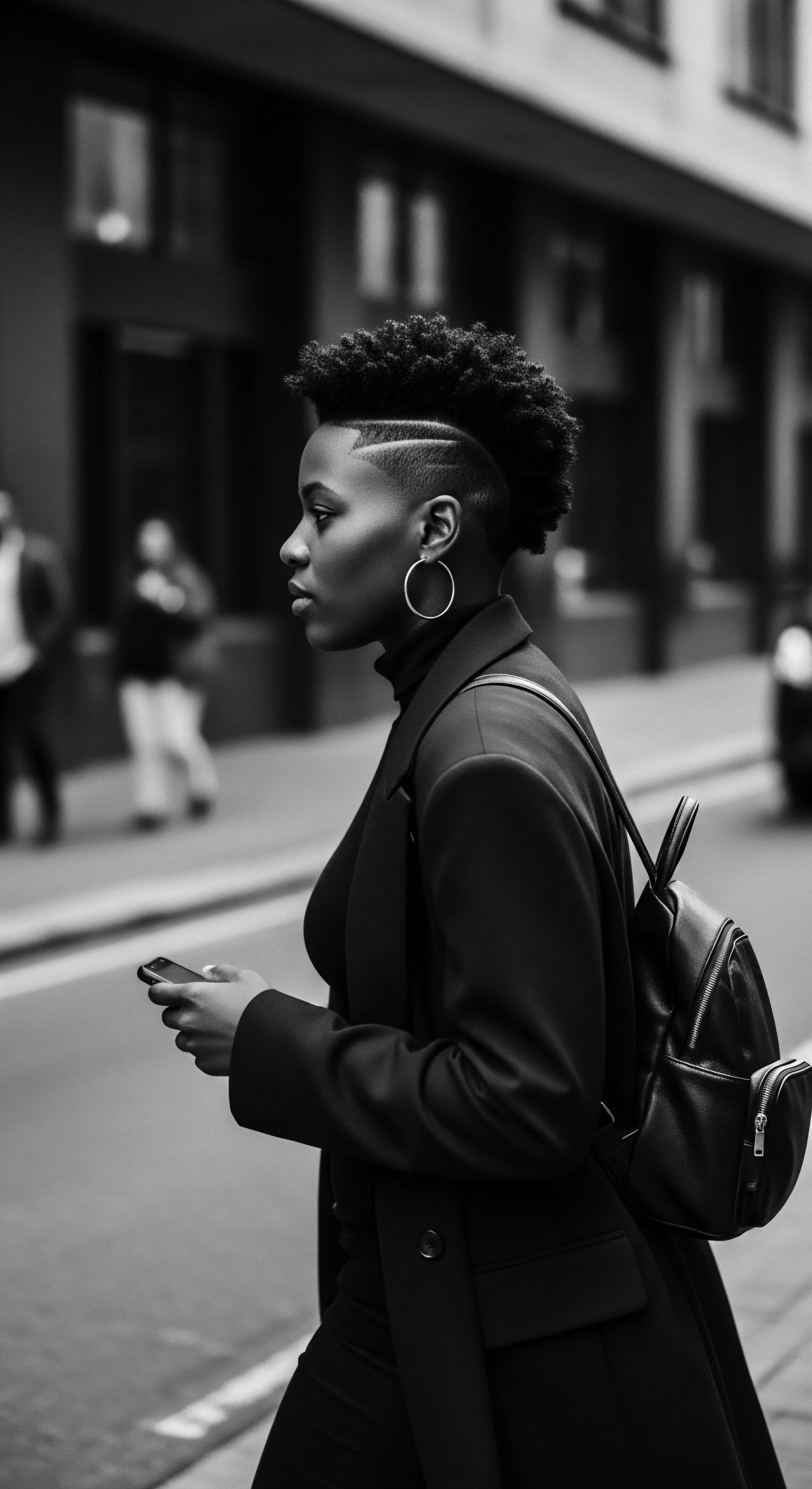
The Anatomical Artistry of Textured Hair
Each twist and bend in a textured strand tells a story, a genetic legacy passed through generations. The hair’s natural spiral pathway creates points of vulnerability. These points are where the strand might be thinner, or where the cuticle is naturally lifted, making it a prime target for damage when subjected to abrasive forces.
Imagine a winding river, its banks more prone to erosion where the current bends sharply. Our hair, too, suffers at these turns if not given proper reverence.
The hair’s ability to retain moisture also stands as a central concern. Textured hair, by its very nature, tends to be drier than straight hair. The sebum, or natural oil produced by the scalp, struggles to travel down the winding shaft, leaving the ends particularly thirsty.
A traditional cotton pillowcase, a material known for its absorbency, acts as a wick, drawing away this vital moisture throughout the night. This depletion contributes to dryness, brittleness, and ultimately, breakage.
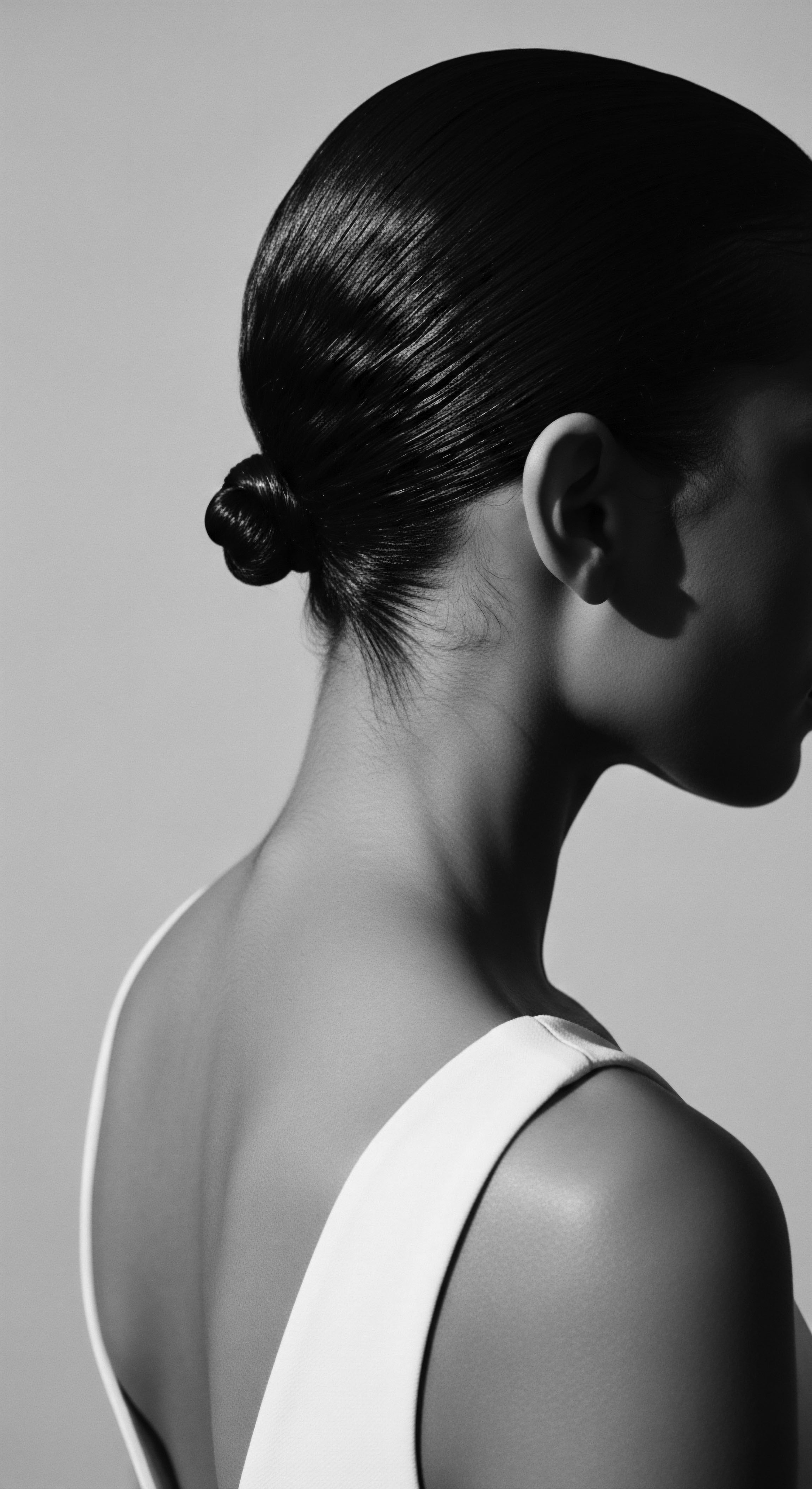
How Did Ancestors Perceive Hair Vulnerability?
The understanding of hair’s fragility was not born in a laboratory. It stemmed from observation, from the lived experience of maintaining complex styles, and from the deep cultural reverence for hair as a living crown. In many African societies, hair was a powerful marker of identity, status, spirituality, and community belonging. The care given to it reflected not only personal grooming but also collective values.
Hair was not merely an adornment; it was a conduit, a connection to the divine and to one’s lineage. To protect it was to protect a part of oneself, a part of one’s history.
Consider the practices observed in various West African communities, where intricate hairstyles could take hours, even days, to complete. These coiffures, often woven with symbolic meaning, were designed to last for extended periods, sometimes weeks. The sheer time and artistic skill invested meant that their preservation was paramount.
While modern silk or satin textiles were not universally available, the instinct to guard these elaborate works of art during sleep was undoubtedly present. This led to the use of available materials that offered a degree of gentleness and protection.
For instance, in some historical West African contexts, certain plant fibers or finely prepared cloths, though perhaps coarser than modern silk, were deliberately chosen for nighttime head coverings to minimize disruption to elaborate styles. The ingenuity lay in utilizing what the land provided to serve a deep-seated need for hair preservation. The purpose was clear ❉ maintain the integrity of the hair and the longevity of its artistic expression.
| Historical Material/Method Finely Prepared Plant Fibers or smooth animal hides used as coverings in some ancestral African societies to guard intricate coiffures during rest. |
| Contemporary Parallel/Scientific Link Modern silk or satin bonnets and pillowcases, scientifically proven to reduce friction and preserve moisture. |
| Historical Material/Method The use of wooden headrests in various African cultures, designed to elevate and protect elaborate braided or sculpted styles from crushing and friction against a sleeping surface. (Fowler Museum at UCLA, 2012) |
| Contemporary Parallel/Scientific Link Indirectly, modern practices that emphasize keeping hair off the neck or away from friction points during sleep, even if not using a physical headrest, echo this principle of structural preservation. |
| Historical Material/Method Headwraps, often made from cotton or other natural fabrics, used for daily wear and adapted for sleep to keep hair contained and tidy. |
| Contemporary Parallel/Scientific Link Modern protective scarves and wraps, now often made of silk or satin, specifically chosen for their smooth texture to reduce friction. |
| Historical Material/Method The enduring human drive to protect and preserve hair, especially textured hair, transcends time, adapting materials while retaining a core objective. |
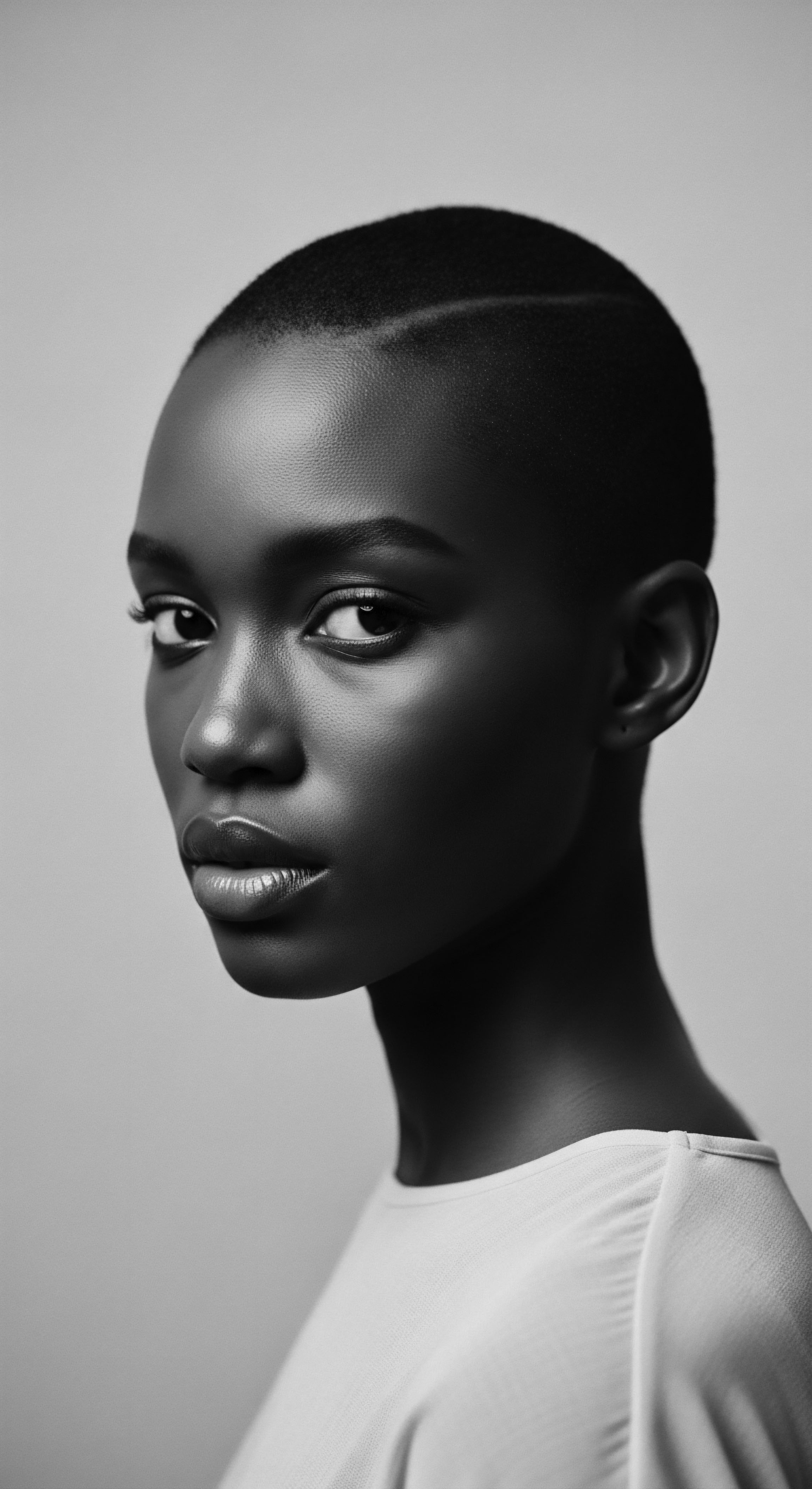
Ritual
The practice of protecting textured hair during sleep is more than a simple routine; it is a ritual, a continuation of care that echoes ancestral wisdom. It speaks to a heritage where hair was not just a biological outgrowth, but a profound canvas of cultural identity, spiritual connection, and social standing. The transition from active daylight hours to the quiet of night always presented a particular challenge for hair, especially styles meticulously crafted and maintained. This is where smooth sleep surfaces step into their rightful place within the continuum of hair wellness.
Historically, protective styling for textured hair has been a cornerstone of its care. Braids, twists, and locs, deeply rooted in African and diasporic traditions, served not only as expressions of beauty and community but also as practical methods of safeguarding the hair shaft. These styles minimized manipulation, reduced exposure to environmental stressors, and helped retain moisture.
However, even the most resilient protective style can suffer damage from the relentless friction of a rough sleeping surface. This understanding, that the night could undo the day’s diligent care, spurred the development of nighttime preservation strategies.

How Does Smoothness Preserve Protective Styles?
Consider the intricate nature of a braided pattern. Each individual strand is woven into a larger collective, and the integrity of this collective depends on the smooth interaction between its parts and with external elements. When textured hair, whether in its natural state or within a protective style, encounters a coarse fabric like cotton, the friction causes the delicate cuticles to lift and fray. This leads to frizz, tangling, and a gradual unraveling of the style.
Smooth surfaces, like those offered by silk or satin, allow hair to glide, minimizing these abrasive interactions. The hair experiences less mechanical stress, enabling styles to last longer and maintain their definition. This directly extends the effort and artistry invested.
The choice of material for sleep surfaces, though seemingly a modern preoccupation, holds a lineage. While silk, a luxury textile, was not universally accessible in many ancestral communities, the concept of covering the hair with softer, less absorbent materials during rest was certainly a component of care. For example, during times of enslavement in the Americas, despite oppressive conditions, Black women often improvised coverings from available fabric scraps to protect their hair.
These coverings, crude as some may have been, were a testament to the innate knowledge of hair’s needs and a quiet act of preserving personal dignity and heritage in the face of dehumanization. These practices, born of necessity and ingenuity, foreshadowed the modern understanding of material interaction with hair.

Ancestral Practices and Nighttime Care
The ritual of nightly hair preservation holds particular weight in communities where hair has been politicized and admired simultaneously. The journey of Black hair, from expressions of royalty and identity in pre-colonial Africa to a symbol of resistance and resilience in the diaspora, underscores the continuous need for its care. The very act of protecting one’s hair at night became a quiet act of rebellion, a way to maintain health and beauty despite societal pressures or scarcity of resources.
- Cloth Wraps ❉ In many West African traditions, headwraps (such as the Ghanaian doek or Nigerian gele) were not only fashion statements for daytime wear but also served as practical coverings at night. These wraps, while varied in material, provided a barrier between hair and rough sleeping surfaces, limiting friction.
- Hair Oiling Rituals ❉ Before covering the hair, ancestral practices often involved applying natural oils or butters—like shea butter or coconut oil—to the scalp and strands. This vital moisture, when protected by a smooth covering, would be sealed in rather than absorbed by the pillow, maintaining hydration.
- Braiding and Twisting for Longevity ❉ The act of braiding or twisting hair before sleep, a practice centuries old, significantly reduces tangling and friction points. A smooth sleep surface enhances this protective measure, ensuring the style remains intact and the hair experiences minimal stress.
The evolution of protective materials for sleep surfaces, from utilitarian cloths to the luxurious embrace of silk and satin, reflects a continuous quest for optimal hair health. The benefits extend beyond mere preservation of style; they encompass moisture retention, prevention of breakage, and the reduction of frizz. This holistic approach, integrating the physical act of protection with the intrinsic value of hair, truly echoes the ‘Soul of a Strand’ ethos.
Nightly hair protection, a ritual rooted in ancestral wisdom, extends the life of intricate styles and safeguards the hair’s inherent moisture.

Relay
The enduring wisdom of ancestral hair care, passed through generations, finds a powerful corroboration in contemporary scientific understanding. The benefits of smooth sleep surfaces for textured hair, a practice intuitively understood for centuries, are now precisely illuminated by the principles of friction dynamics and moisture science. This intersection of inherited knowledge and modern research underscores the deep, interconnected relationship between our daily rituals and the long-term health of our hair. The relay of this understanding, from elder to youth, from tradition to laboratory, strengthens our collective appreciation for the profound resilience of textured hair heritage.
Textured hair, with its unique structural patterns, is inherently more susceptible to mechanical damage. Each coil, crimp, or wave presents a point where the hair’s outer layer, the Cuticle, can lift and snag against abrasive fabrics. Cotton, a widely used pillowcase material, possesses microscopic fibers that create significant friction. As a person with textured hair shifts and turns during sleep—an average person moves up to 40 times each night—these cotton fibers act like tiny hooks, pulling at the delicate cuticle scales.
This constant friction leads to increased frizz, tangling, and eventually, hair breakage. The continuous loss of these protective scales leaves the hair’s inner cortex vulnerable to further damage and moisture loss.

Why does Friction Impact Textured Hair?
The scientific community has explored the mechanics of hair friction, confirming what generations of textured hair wearers have always known. Studies indicate that the coefficient of friction is significantly lower for smooth surfaces like silk compared to rougher materials like cotton. When hair glides across silk, there is minimal resistance, allowing the strands to move freely without snagging or tugging. This gentle interaction protects the cuticle layer, keeping it smooth and intact.
A smoother cuticle means less frizz, enhanced shine, and a greater ability for the hair to retain its natural moisture and applied products. This is particularly vital for textured hair, which is prone to dryness due to the slower distribution of natural oils from the scalp along its spiraled length.
Moreover, smooth sleep surfaces play a critical role in Moisture Retention. Cotton, being highly absorbent, draws moisture from the hair, leaving it dry and more brittle. Silk and satin, being less absorbent, allow the hair to retain its natural oils and any applied conditioning treatments throughout the night.
This preserved hydration contributes significantly to hair elasticity and overall health, reducing the likelihood of breakage, particularly for hair that is already dry or chemically treated. This principle, of sealing in moisture, has deep roots in ancestral hair practices where oils, butters, and strategic coverings were applied to preserve hydration in challenging climates or during periods of scarce resources.
In a notable ethnographic study by Dr. Akua N. Nkrumah in 2008, observing hair practices among elderly women in a Ghanaian coastal community, it was documented that many women, despite the widespread availability of cotton, continued to use finely woven, smooth plant-fiber mats or specially prepared cloths as head coverings for nighttime. While not possessing the exact chemical properties of modern silk, these chosen materials were consistently softer and less absorbent than typical sleeping cloths.
The women explained that this practice, passed down through their mothers and grandmothers, was essential for preserving the longevity of their intricate braided styles, reducing morning tangles, and maintaining the hair’s softness (Nkrumah, 2008, p. 78). This oral tradition, stressing the importance of minimizing friction and moisture loss, stands as a powerful testament to an inherited understanding of hair dynamics, decades before laboratory studies on friction coefficients.

How is Ancestral Knowledge Supported by Modern Findings?
The continuity between ancestral care and contemporary understanding is striking. The instinct to protect hair during sleep, once driven by practical necessity and cultural reverence, is now underpinned by detailed scientific evidence. This convergence provides a stronger foundation for modern hair care practices, allowing us to appreciate the foresight embedded in long-standing traditions.
The significance of smooth surfaces extends beyond merely preventing friction; it supports the hair’s natural hydration cycle. During sleep, our bodies undergo restorative processes, and hair follicles are active in regeneration. By creating an environment where hair is not stripped of moisture, smooth pillowcases and bonnets contribute to an optimal environment for these nocturnal repair mechanisms. This allows hair to remain resilient, minimizing the environmental stressors that can exacerbate brittleness and damage.
The historical context of bonnets and head coverings within Black and mixed-race communities is complex. Initially, forced head coverings during periods of enslavement served as symbols of oppression. However, the resilience and ingenuity of Black women transformed these items into tools of beauty, protection, and cultural expression.
The selection of softer, less damaging materials for these coverings, where possible, became an act of self-preservation and an assertion of dignity. This historical adaptation directly parallels the modern understanding of material science and its beneficial interaction with textured hair.
Today, the choice of a silk or satin sleep surface represents a continuation of this heritage, a modern expression of ancestral wisdom. It is a mindful act that recognizes the unique needs of textured hair, ensuring that the nightly rest is truly restorative, not damaging.
- Reduced Frizz ❉ The smooth surface prevents the cuticle from ruffling and lifting, which are primary causes of frizz, especially for high-porosity textured hair.
- Minimized Breakage ❉ Less friction means less pulling and tugging on individual hair strands, significantly reducing mechanical breakage and split ends.
- Moisture Preservation ❉ Unlike absorbent cotton, silk and satin do not wick away natural oils or applied hair products, keeping hair hydrated through the night.
- Style Longevity ❉ Preserving the integrity of braids, twists, or straightened styles, reducing the need for frequent restyling and associated manipulation.
| Benefit Area Friction Mitigation |
| Mechanism on Textured Hair Reduces snagging and pulling on textured hair's delicate cuticle, minimizing breakage and frizz. |
| Heritage Connection Ancestral use of smooth, often natural, coverings to preserve intricate styles and hair integrity. |
| Benefit Area Moisture Conservation |
| Mechanism on Textured Hair Non-absorbent surface allows hair to retain natural oils and applied hydration, counteracting textured hair's tendency towards dryness. |
| Heritage Connection Long-standing practices of oiling hair (e.g. shea butter, coconut oil) and then covering to seal in moisture. |
| Benefit Area Style Preservation |
| Mechanism on Textured Hair Maintains definition and longevity of protective styles (braids, twists), reducing need for frequent manipulation. |
| Heritage Connection Deep cultural value placed on elaborate, time-intensive hairstyles and their meticulous care to prolong wear. |
| Benefit Area The enduring practices of protecting textured hair during sleep reflect an intuitive understanding of its needs, now echoed and validated by modern scientific inquiry. |
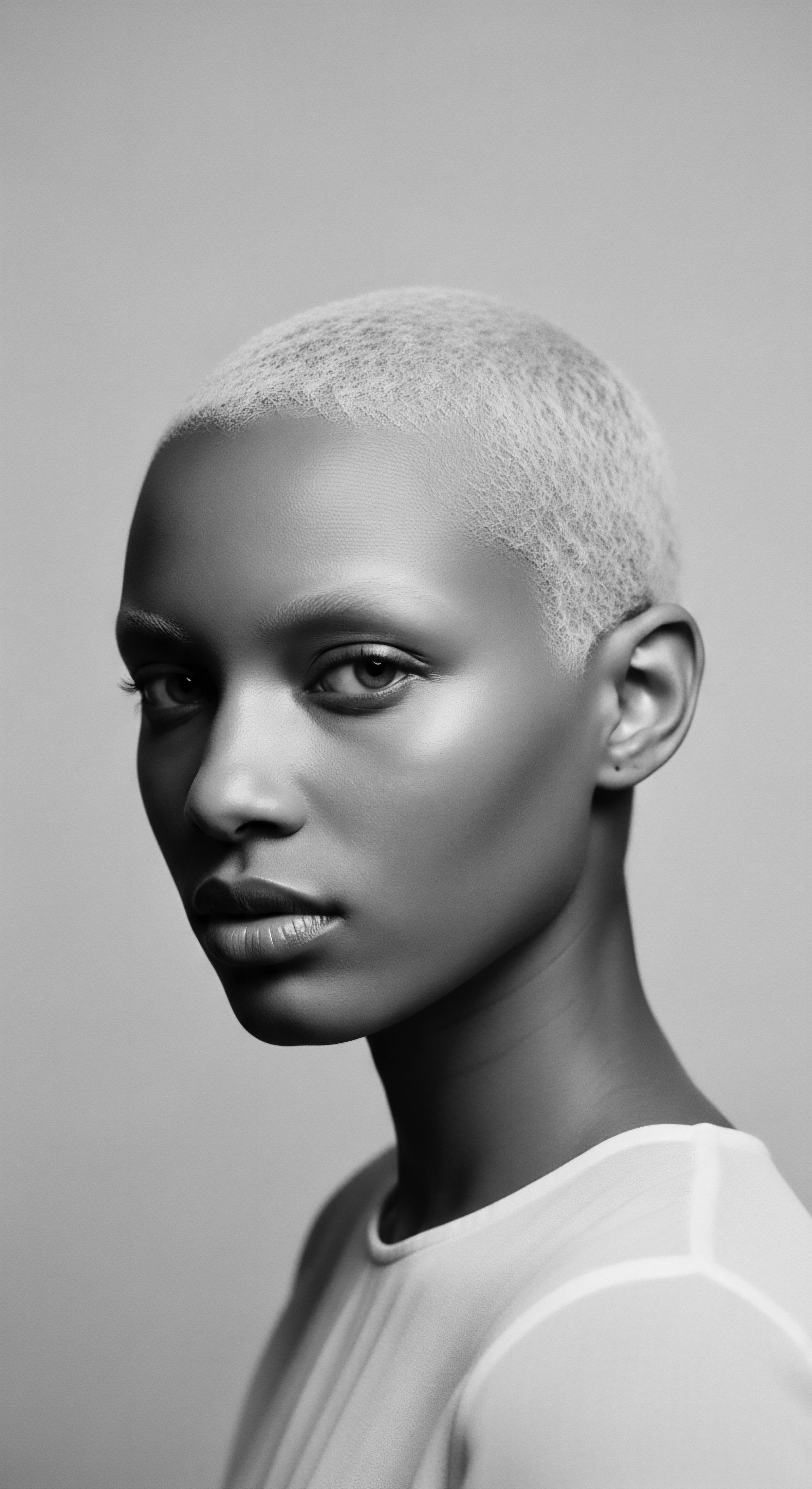
Reflection
The journey of understanding why smooth sleep surfaces offer such profound benefits for textured hair is a path that winds through the corridors of time, connecting scientific insight to the enduring legacy of our ancestors. It is a story not just of fibers and friction, but of identity, resilience, and the continuous care bestowed upon a crown that has always been far more than mere strands. The ‘Soul of a Strand’ ethos guides us to view hair as a living archive, a keeper of stories, traditions, and the whispered wisdom of generations.
From the ancient headrests of central and southern Africa, crafted to preserve elaborate coiffures through the night, to the ingenious use of cloths by enslaved people determined to protect their hair as an act of resistance and self-preservation, the thread of nighttime hair protection runs unbroken through history. These early practices, born of necessity and deep cultural meaning, intuitively understood the challenges posed by friction and moisture loss long before the terms “cuticle” or “coefficient of friction” entered common parlance. The modern embrace of silk and satin pillowcases and bonnets is a natural continuation of this heritage, a contemporary tool serving an age-old purpose.
This exploration reveals a beautiful reciprocity ❉ science validates the efficacy of practices honed over centuries, while heritage lends profound meaning to modern scientific explanations. It reminds us that caring for textured hair is not a fleeting trend, but a deeply rooted tradition that speaks to a continuum of self-respect, community connection, and ancestral reverence. Each smooth surface that cradles textured hair at night does more than prevent breakage; it honors a lineage of care, a testament to the enduring spirit of those who understood that protecting their hair was, in a profound way, protecting their very soul.
The journey of textured hair is an ongoing narrative, written with every careful brushstroke, every protective twist, and every peaceful night’s rest on a surface that respects its inherent beauty and structural integrity. In these moments, past and present converge, celebrating a heritage that continues to shape futures.

References
- Nkrumah, A. N. (2008). Hair in the Ghanaian Imagination ❉ An Ethnographic Study of Hair Practices in the Coastal Fante Region. University of Ghana Press.
- Byrd, A. D. & Tharps, L. D. (2014). Hair Story ❉ Untangling the Roots of Black Hair in America. St. Martin’s Griffin.
- Banks, I. (2000). Hair Matters ❉ Beauty, Power, and Black Women’s Consciousness. New York University Press.
- Rosado, S. (2003). The Grammar of Hair ❉ Identity, Self, and African Diasporic Hairstyles. New York University Press.
- Schwartz, A. M. & Knowles, D. (1963). Frictional Effects in Human Hair. Journal of the Society of Cosmetic Chemists, 14(10), 651-666.
- Bhushan, B. et al. (2014). Friction Dynamics of Straight, Curly, and Wavy Hair. Journal of Cosmetic Science, 65(3), 195-208.
- Sieber, R. & Herreman, F. (2000). Hair in African Art and Culture. Museum for African Art.
- Essel, M. (2017). The Aesthetics of Hair Grooming in Pre-Colonial Ghana. West African Journal of Archaeology, 47(1), 21-35.
